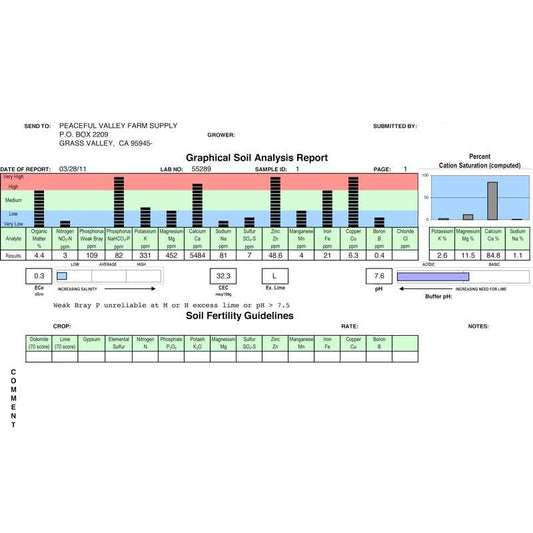Understanding Your Soil Analysis Report: A Guide to Healthier Gardening
Soil health is the cornerstone of successful organic gardening. Conducting a soil analysis is the first step to understanding what your soil needs before beginning a fertilizing program. Let’s break down the terms and metrics in a soil analysis report to help you make informed decisions for your garden.
Nutrient Levels
The soil analysis report includes a chart showing the levels of macro and micronutrients, organic matter, and sometimes trace minerals. The chart provides both numerical values and bar graphs to indicate whether levels are high, low, or ideal. However, nutrient levels should not be considered in isolation. For instance, adding a deficient nutrient like calcium can impact others, including magnesium and potassium.
Percent Cation Saturation
This section details the balance of positively charged nutrients (cations), including potassium, magnesium, calcium, and sodium. Ideal ranges are:
- Potassium: 4–7%
- Magnesium: 10–20%
- Calcium: 65–75%
- Sodium: Less than 3%
Cation balance affects nutrient uptake and overall soil health.
Electrical Conductivity (ECE)
ECE measures soil salinity, which can impact crop yields and nutrient availability. High ECE (above 2.0) can result from excessive manure use, poor drainage, or mineral-rich irrigation water.
Cation Exchange Capacity (CEC)
CEC indicates the soil’s ability to retain and utilize nutrients. Soils with a high CEC (20 or more) hold nutrients longer, providing a buffer against imbalances. Low CEC soils require frequent, smaller fertilizer applications.
Lime Levels and pH
Soil pH affects nutrient availability and microbial activity. Most plants thrive in a slightly acidic range of 6.0–6.8. Adjust pH gradually if necessary to avoid harming plants or beneficial soil organisms.
Conclusion
Interpreting a soil analysis report ensures targeted soil amendments, saving time and resources while promoting a thriving garden. Now that you understand the report’s metrics, you’re ready to take the next step: addressing any imbalances for optimal plant health.
Explore our full collection of soil testers.
For more information, see our article on How to Test Your Soil at Home.


